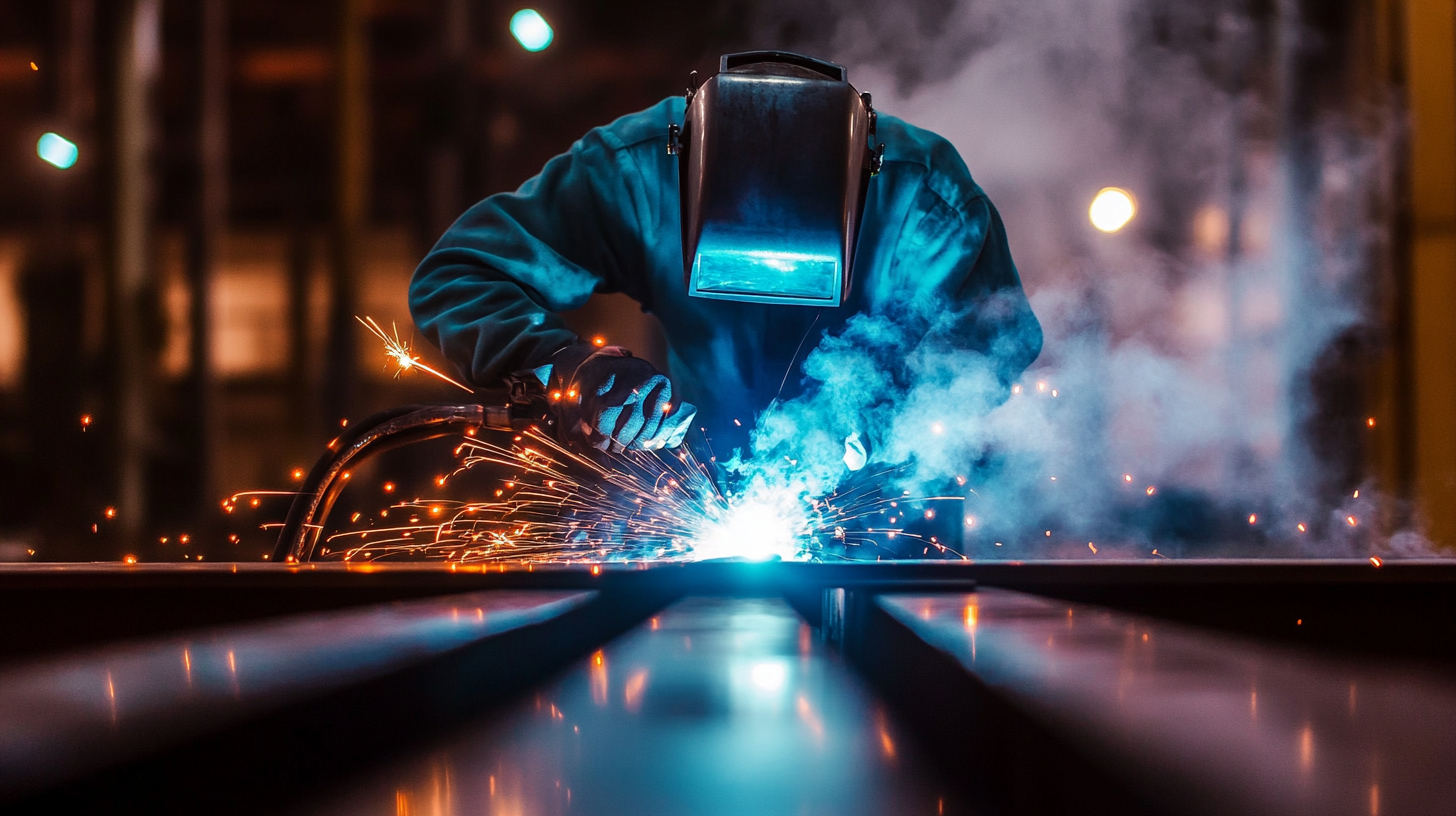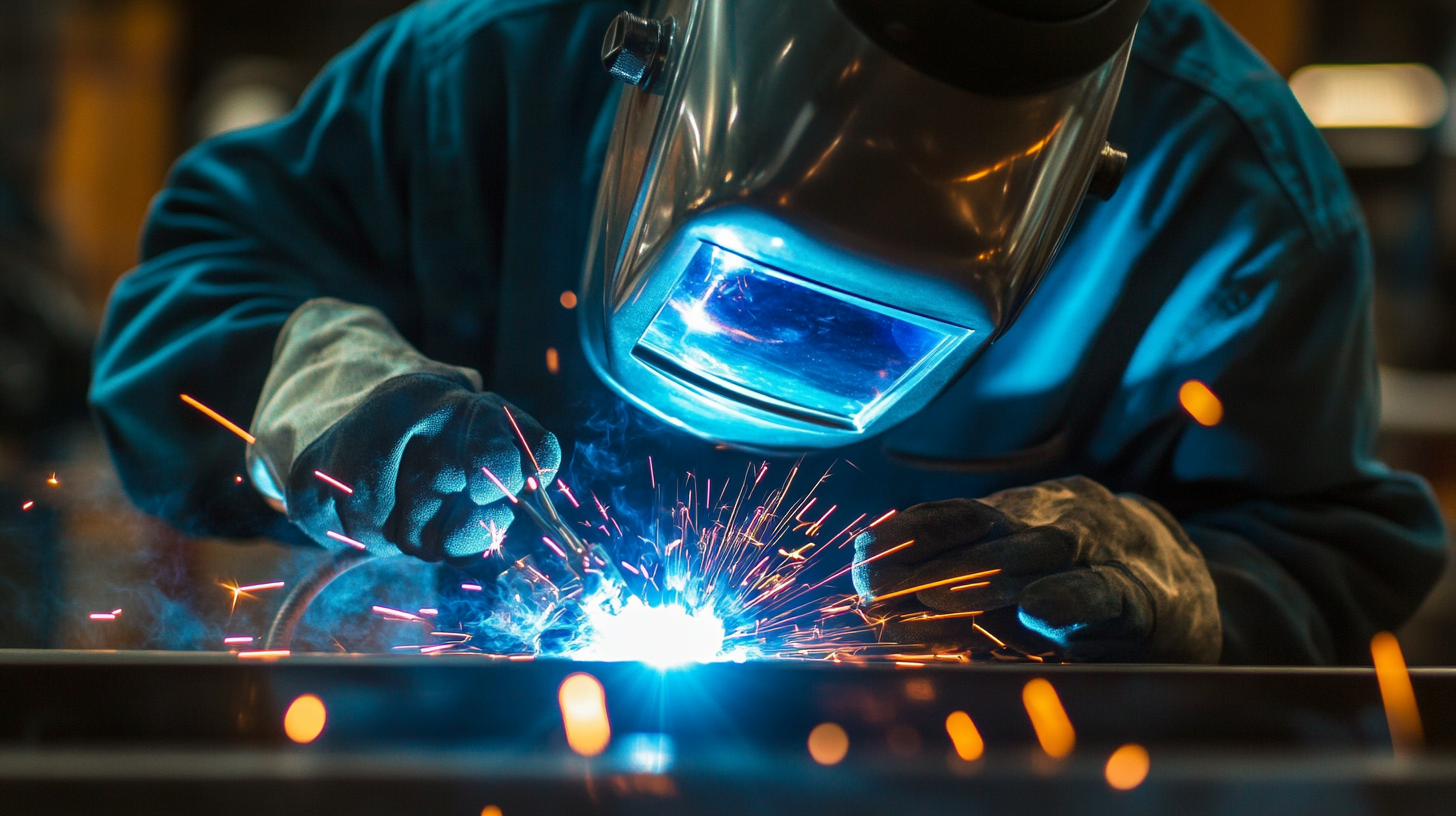In the evolving landscape of manufacturing, the demand for precision and efficiency has led to a significant rise in the adoption of Digital Welding Machines. According to a recent market analysis by ResearchAndMarkets, the global digital welding equipment market is projected to grow at a CAGR of 6.5% from 2021 to 2026, underscoring the increasing reliance on advanced technology in welding applications. These machines offer unmatched accuracy and control, which are critical in industries ranging from automotive to aerospace. However, the success of adopting such sophisticated equipment largely depends on selecting a reputable manufacturer known for quality and innovation. This guide delves into the key factors to consider when choosing a top manufacturer of Digital Welding Machines, ensuring that you make an informed investment for precision welding success.

In recent years, digital welding machines have revolutionized the welding industry, providing unmatched precision and control for a variety of applications. Understanding the basics of these advanced machines is essential for achieving optimal results. According to a report by Research and Markets, the global welding equipment market is projected to reach $26.87 billion by 2026, driven largely by the adoption of digital technology. These machines incorporate advanced sensors and feedback loops that allow welders to monitor and adjust parameters in real-time, resulting in increased accuracy and reduced material waste.
Digital welding machines utilize advanced algorithms and user-friendly interfaces to simplify complex welding processes. This technological advancement not only enhances the quality of welds but also improves efficiency in production. A study from the American Welding Society indicates that the implementation of digital welding solutions can lead to a 30% reduction in downtime and a significant increase in productivity. Understanding these fundamentals empowers welders to select the right digital machine suited for their specific needs, ensuring both precision and success in their welding projects.
When investing in high-quality digital welding machines, several key features must be considered to ensure precision and efficiency. One of the critical aspects is the welding power capacity, which has seen significant improvements in recent models. Advanced machines are now compact yet deliver more power than ever before, allowing for enhanced MIG/MAG welding capabilities. This leap in technology is essential for industries demanding high-quality welds in various applications, including automotive and construction.
Additionally, data-driven methods for predicting welding quality are becoming increasingly important. The integration of analytics and model-driven strategies assists manufacturers in optimizing the welding process and minimizing defects. According to recent market reports, the global welding consumables market is expected to grow from USD 18.02 billion in 2023 to USD 32.27 billion by 2033, reflecting a CAGR of approximately 5.2%. This tremendous growth highlights the rising demand for precision in welding practices and the continual advancement of digital welding technologies, making it essential for professionals to stay informed about these developments to achieve welding success.
Choosing the right digital welding machine can significantly influence the quality and efficiency of your welding projects. Start by assessing your specific needs: consider the types of materials you'll be working with, the thickness of those materials, and the welding processes you intend to use. Different machines cater to various applications, so having a clear understanding of your requirements is essential.
Tips: When evaluating options, look for machines that offer adjustable settings to accommodate diverse materials and thicknesses. Additionally, pay attention to the power source—whether it’s MIG, TIG, or stick welding—as each method has distinct advantages and ideal use cases.
Next, consider the portability and ease of use of the welding machine. For those who will be working in different locations, a lighter, more compact unit might be necessary. Many modern digital welding machines come equipped with advanced features like automated settings and digital displays, which can enhance precision and ease of operation.
Tips: Always test machine usability by checking the interface and controls. User-friendly machines will save you time and frustrations, allowing you to focus on achieving the best welds possible. Reading reviews and seeking recommendations can also guide you toward reliable options that suit your skill level and project demands.
Maintenance is paramount for ensuring the longevity and performance of digital welding machines. According to a report by the American Welding Society, regular maintenance can extend the life of welding equipment by up to 30%. This is particularly important considering that the average cost of a high-end welding machine can exceed $10,000. Neglecting routine checks could lead to expensive repairs or replacements that impact productivity and project timelines.
To maintain optimal performance, it is crucial to conduct regular inspections. This includes checking essential components such as the torch, cables, and connections for wear and tear. The Hobart Institute of Welding Technology indicates that replacing worn parts can prevent operational failures and ensure consistent weld quality. Additionally, keeping the machine clean and recalibrating settings as required will help maintain precision, a critical factor in successful welding projects. Regular maintenance not only boosts efficiency but also significantly reduces the risk of workplace accidents, emphasizing its importance in any welding operation.

When it comes to selecting the right digital welding machine, finding the perfect fit for your budget and needs can make a significant difference in your welding projects. In our comprehensive guide, we delve into a variety of options ranging from budget-friendly models to high-end machines suitable for professional welders. Each review highlights the features that make these products stand out, ensuring you can make an informed decision without breaking the bank.

Tips: Consider your specific welding requirements before making a purchase. Whether you need a machine for occasional home repairs or regular industrial use, understanding your needs will guide your selection. Additionally, read customer reviews and compare features across different models. This can provide real-world insights that are invaluable in determining which machine will deliver the best performance, reliability, and ease of use.
Investing in a quality digital welding machine may seem daunting, but it's essential to evaluate both the technological advancements and budget constraints. Look for machines that offer advanced features like digital displays, programmable settings, and integrated safety mechanisms, as these can enhance your precision and efficiency. Don't forget to factor in the cost of maintenance and consumables, as these can significantly impact your overall welding budget in the long run.
